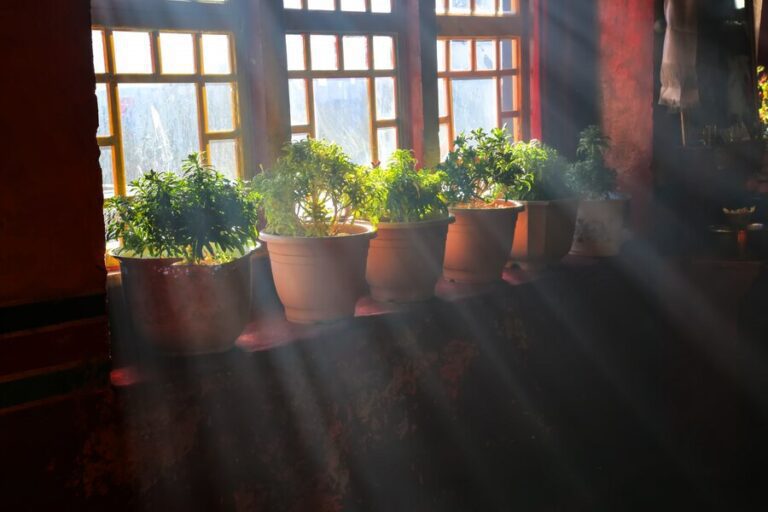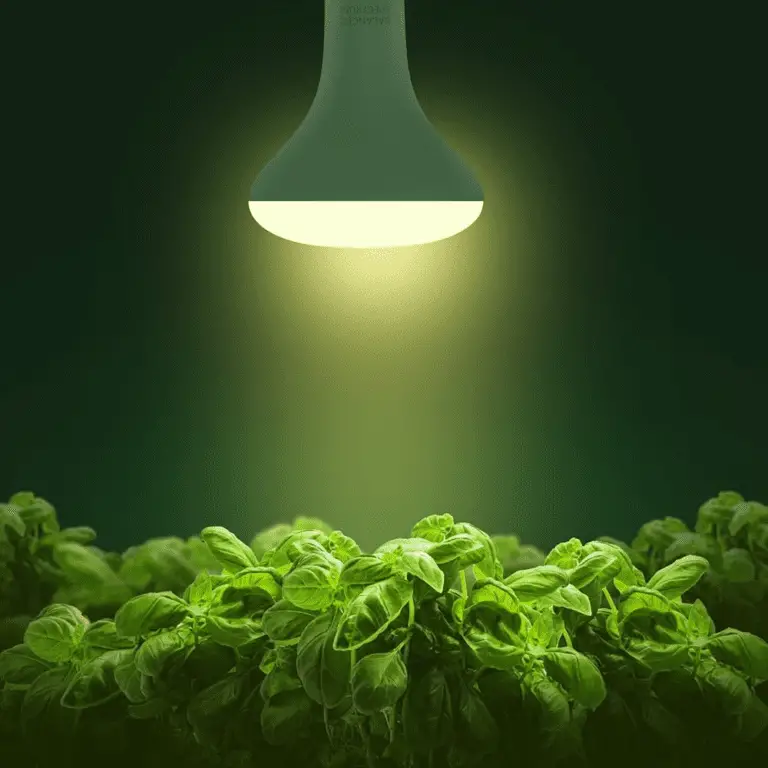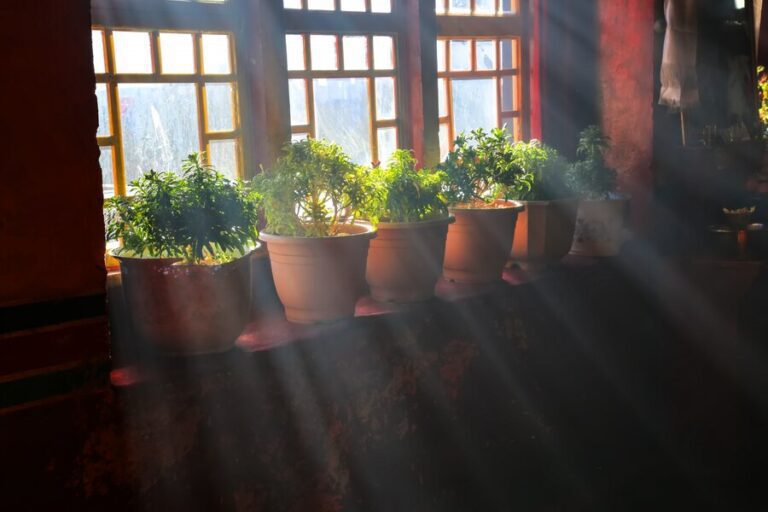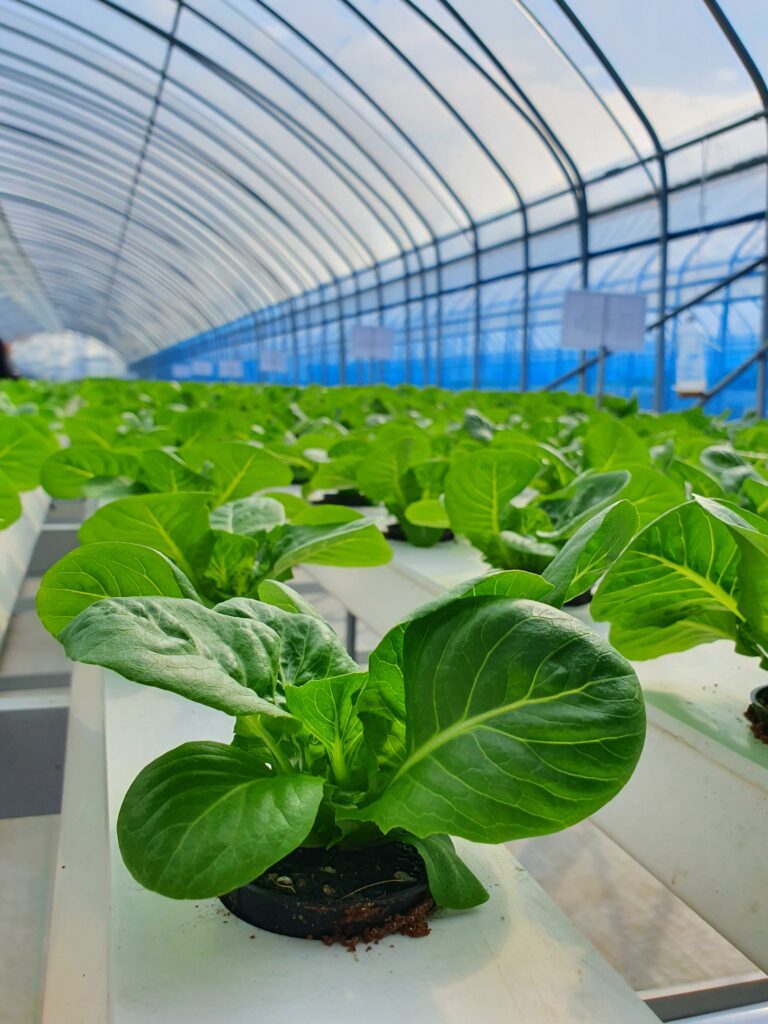The Ultimate Hydroponic Grow Light Guide: Everything You Need to Know
Table of Contents
The Importance of Grow Lights in Hydroponic Systems
Grow lights play a vital role in hydroponic systems, where plants are cultivated without soil. These specially designed lights serve as an artificial source of light, aiming to mimic the sunlight required by plants for the process of photosynthesis. As hydroponic systems are often set up indoors or in locations with limited natural light, providing the right amount and quality of light is crucial for the growth and development of plants.
One of the primary reasons grow lights are important in hydroponic systems is their ability to provide a consistent and controlled light source. Unlike natural sunlight, which varies in intensity and duration throughout the day and changes with the seasons, grow lights can be adjusted to meet the specific needs of different plant species at various stages of growth. This control allows growers to optimize the growth conditions and maximize plant photosynthesis, resulting in healthier and more productive plants. Additionally, grow lights enable year-round cultivation, overcoming the limitations imposed by climate and geographic location. Indoor gardening enthusiasts or commercial growers can extend their growing season or cultivate plants that are not well-suited to their local climate, thanks to the flexibility provided by grow lights.
• Grow lights provide a consistent and controlled light source in hydroponic systems.
• They can be adjusted to meet the specific needs of different plant species at various stages of growth.
• This control allows growers to optimize growth conditions and maximize plant photosynthesis.
• Grow lights enable year-round cultivation, overcoming limitations imposed by climate and location.
• Indoor gardening enthusiasts or commercial growers can extend their growing season with grow lights.
Different Types of Grow Lights for Hydroponics
When it comes to hydroponic gardening, choosing the right grow lights is essential for the success of your plants. Different types of grow lights offer various advantages and disadvantages, and understanding these options will help you make an informed decision. In this section, we will explore three common types of grow lights for hydroponics: LED grow lights, fluorescent grow lights, and high-intensity discharge (HID) grow lights.
LED grow lights have gained popularity in recent years due to their energy efficiency and longevity. These lights use semiconductor chips to produce light, making them highly efficient in converting electricity into usable light for plant growth. LED lights also offer a wide spectrum of colors, allowing you to tailor the light spectrum to the specific needs of your plants. However, one drawback of LED lights is their initial cost, as they are typically more expensive compared to other types of grow lights.
Fluorescent grow lights, on the other hand, are a cost-effective option for hydroponic systems. They produce less heat, making them suitable for indoor gardening without risking damage to your plants. Fluorescent lights are available in two forms: compact fluorescent lights (CFLs) and linear fluorescent lights (T5HO). CFLs are ideal for small setups or low-light plants, while T5HO lights are better suited for larger spaces or plants with higher light requirements. However, fluorescent lights have a shorter lifespan compared to LED and HID lights, and they may require more frequent replacement.
• LED grow lights are energy efficient and have a long lifespan
• LED lights offer a wide spectrum of colors for customized plant growth
• Initial cost of LED lights is higher compared to other types of grow lights
• Fluorescent grow lights are cost-effective for hydroponic systems
• They produce less heat, making them safe for indoor gardening
• Available in CFLs and T5HO options for different setups and light requirements
– CFLs are ideal for small setups or low-light plants
– T5HO lights are better suited for larger spaces or plants with higher light requirements
– Fluorescent lights have a shorter lifespan compared to LED and HID lights
High-intensity discharge (HID) grow lights provide intense light output, making them suitable for large-scale hydroponic operations. There are two main types of HID grow lights: metal halide (MH) and high-pressure sodium (HPS). MH bulbs emit blue-white light, which promotes vegetative growth, while HPS bulbs emit orange-red light that stimulates flowering and fruiting stages. HID lights require ballasts to regulate the electrical current flowing through the bulbs. However, they consume more electricity than LED or fluorescent lights and generate significant heat, requiring proper ventilation to prevent damage to plants.
– HID grow lights provide intense light output
– Metal halide (MH) bulbs promote vegetative growth with blue-white light
– High-pressure sodium (HPS) bulbs stimulate flowering and fruiting stages with orange-red light
– Require ballasts to regulate electrical current
– Consume more electricity than LED or fluorescentlights
– Generate significant heat requiring proper ventilation
Sure, here is a table of different types of grow lights for hydroponics:
| Type of Grow Light | Advantages | Disadvantages |
|---|---|---|
| Incandescent | Inexpensive | Inefficient, high heat output |
| Fluorescent | Energy-efficient, low heat output | Not strong enough to penetrate past the plant’s outer foliage or leaves |
| LED | Cost-efficient, energy-efficient, low heat output | Expensive upfront cost |
| Halogen | High light output | High heat output, expensive |
| High-pressure sodium | Best for flowering or fruiting stage of plants | Expensive, high heat output |
| Metal halide | Strong all-around light | Expensive, high heat output |
LED Grow Lights: Their Benefits and Drawbacks
LED grow lights have gained popularity in hydroponic systems due to their numerous benefits. One of the key advantages of LED lights is their energy efficiency. Compared to traditional lighting sources, such as fluorescent or high-intensity discharge (HID) lights, LED grow lights consume significantly less electricity. This not only leads to cost savings for growers but also helps reduce their environmental footprint. Furthermore, LEDs have a longer lifespan, lasting up to 50,000 hours or more, which means less frequent replacements and lower maintenance costs.
Another benefit of LED grow lights is their versatility in providing the optimal light spectrum for plant growth. LED lights can be customized to emit specific wavelengths of light that are most beneficial to different stages of plant development. For example, blue light promotes vegetative growth, while red light stimulates flowering and fruiting. By adjusting the light spectrum using LED grow lights, growers have more control over the growth, health, and yield of their plants. Additionally, LED lights produce less heat compared to other lighting options, reducing the risk of plant damage and allowing for closer proximity to the plants.
Despite their many advantages, LED grow lights do have a few drawbacks to consider. One limitation is the initial cost of purchasing LED fixtures, which can be higher compared to other lighting options. However, the long-term energy savings and lifespan of LED lights often outweigh the upfront expenses. Another drawback is that LED grow lights, if not properly selected, may not have the same light intensity as traditional lighting sources. Growers should carefully choose LED lights with appropriate wattage and coverage to ensure sufficient light levels for optimal plant growth. Additionally, while LED lights have made significant advancements in recent years, some growers may still prefer the tried and tested performance of fluorescent or HID lights for certain crops or specific growth requirements.
Overall, LED grow lights provide numerous benefits for hydroponic systems, including energy efficiency, customizable light spectrum, and minimal heat output. While they may require a higher upfront investment and careful selection, the long-term advantages make LED grow lights a viable option for both hobbyist gardeners and commercial growers alike.
• LED grow lights are energy efficient and consume significantly less electricity compared to traditional lighting sources.
• This leads to cost savings for growers and helps reduce their environmental footprint.
• LED lights have a longer lifespan, lasting up to 50,000 hours or more, resulting in less frequent replacements and lower maintenance costs.
• LED grow lights can be customized to emit specific wavelengths of light that are most beneficial for different stages of plant development.
• Blue light promotes vegetative growth, while red light stimulates flowering and fruiting.
• By adjusting the light spectrum using LED grow lights, growers have more control over the growth, health, and yield of their plants.
• LED lights produce less heat compared to other lighting options, reducing the risk of plant damage and allowing for closer proximity to the plants.
Drawbacks:
– The initial cost of purchasing LED fixtures can be higher compared to other lighting options.
– However, long-term energy savings and lifespan often outweigh upfront expenses.
– If not properly selected, LED grow lights may not have the same light intensity as traditional lighting sources.
– Careful selection is necessary with appropriate wattage and coverage for optimal plant growth.
– Some growers may still prefer fluorescent or HID lights for certain crops or specific growth requirements.
Overall:
LED grow lights provide numerous benefits including energy efficiency,
customizable light spectrum,
and minimal heat output.
While they may require a higher upfront investment
and careful selection,
the long-term advantages make them a viable option for both hobbyist gardeners
and commercial growers alike.
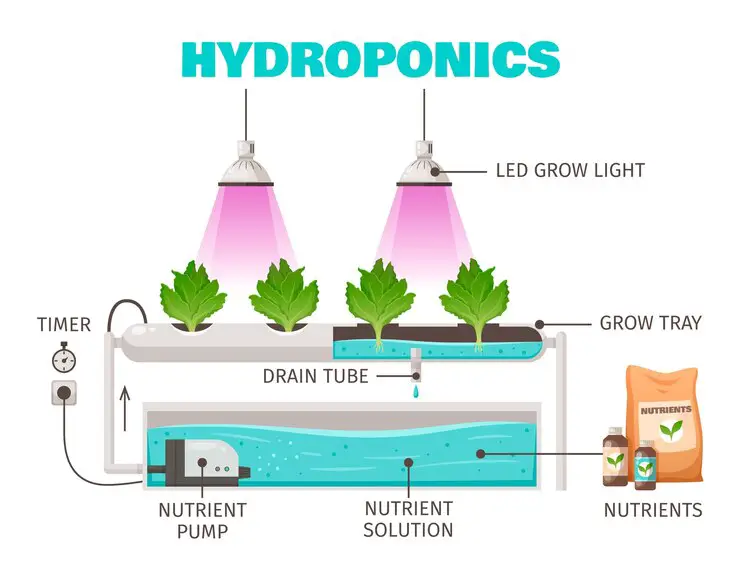
Fluorescent Grow Lights: Pros and Cons
Fluorescent grow lights have long been a popular choice among indoor gardeners for their affordability and ease of use. One of the main advantages of fluorescent lights is their energy efficiency. Compared to other types of grow lights, such as high-intensity discharge (HID) lights, fluorescents consume significantly less energy while still providing adequate light for plant growth. This not only saves on electricity costs but also reduces environmental impact.
Another benefit of fluorescent grow lights is their versatility. Available in different sizes and spectrums, they can be used for various growth stages of plants. For instance, cool white fluorescents are ideal for vegetative growth, while warm white or full spectrum fluorescents are suitable for flowering and fruiting stages. This flexibility allows gardeners to create customized lighting setups for different types of plants, optimizing their growth and development.
However, it’s important to consider some drawbacks when using fluorescent grow lights. One limitation is their relatively lower light intensity compared to other types of grow lights. This means that fluorescent lights may not be suitable for plants that require high levels of light, such as those with high light requirements or plants that need to be placed at a considerable distance from the light source.
Additionally, fluorescent lights have a shorter lifespan compared to other types of grow lights. On average, fluorescent bulbs need to be replaced every 6-12 months to maintain optimal light output. This can be a bit inconvenient and costly in the long run, especially for larger indoor gardens.
Despite these limitations, fluorescent grow lights remain a popular choice for beginners and budget-conscious gardeners. With their energy efficiency, versatility, and affordability, they can provide a viable option for indoor gardening enthusiasts looking to cultivate plants with success and efficiency.
• Fluorescent grow lights are energy efficient, consuming significantly less energy compared to other types of grow lights.
• They come in different sizes and spectrums, allowing for customization based on the growth stages of plants.
• Cool white fluorescents are ideal for vegetative growth, while warm white or full spectrum fluorescents are suitable for flowering and fruiting stages.
• However, fluorescent lights have lower light intensity compared to other types of grow lights, making them unsuitable for plants with high light requirements or those that need to be placed far from the light source.
• Fluorescent bulbs have a shorter lifespan and need to be replaced every 6-12 months, which can be inconvenient and costly for larger indoor gardens.
• Despite these limitations, fluorescent grow lights remain popular among beginners and budget-conscious gardeners due to their affordability.
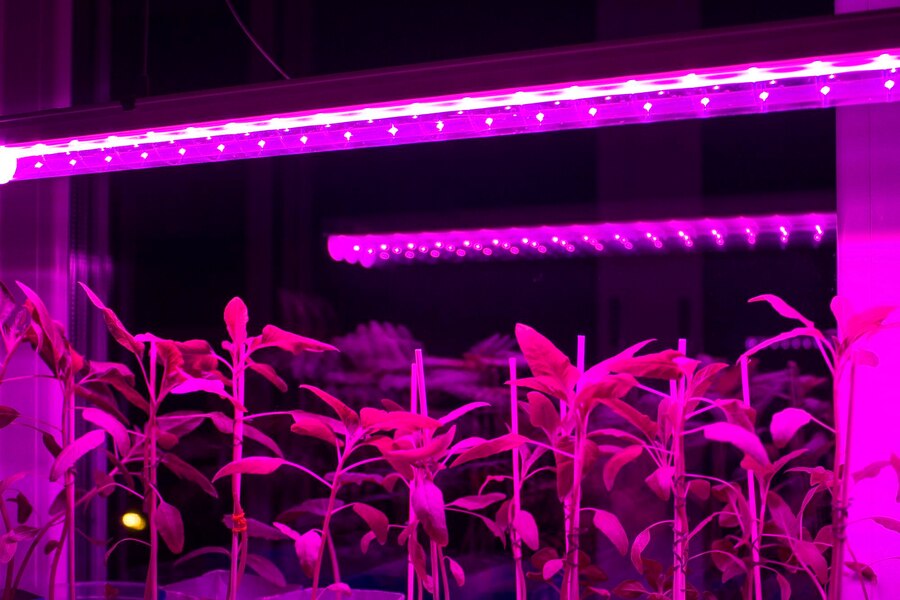
High-Intensity Discharge (HID) Grow Lights: Advantages and Disadvantages
High-Intensity Discharge (HID) grow lights are a popular choice among hydroponic growers due to their intense and efficient light output. One advantage of HID grow lights is their ability to provide high light intensity, which is essential for promoting robust growth and flowering in plants. With their high output of lumens, HID lights can penetrate dense canopies and reach lower leaves, ensuring even light distribution throughout the plant.
Another advantage of HID grow lights is their versatility. HID lights come in two main types: metal halide (MH) and high-pressure sodium (HPS). MH lights emit a bluish-white light spectrum that is ideal for vegetative growth, promoting healthy foliage and strong root development. On the other hand, HPS lights emit a reddish-orange light spectrum, which is beneficial for flowering and fruiting stages, stimulating flower production and increasing yield.
Despite their numerous advantages, HID grow lights have some drawbacks to consider. Firstly, they generate a significant amount of heat, requiring adequate ventilation and cooling systems to prevent heat stress or damage to the plants. Additionally, HID lights consume more electricity compared to other types of grow lights, resulting in higher energy costs. Lastly, HID bulbs have a shorter lifespan compared to LED or fluorescent lights, requiring more frequent replacements, which can be an additional expense for growers.
Taking into account the advantages and disadvantages of HID grow lights, growers should carefully evaluate their specific needs and priorities before deciding if HID lights are the right choice for their hydroponic setup. Ultimately, understanding the unique requirements of plants and considering factors such as light intensity, spectrum, energy efficiency, and maintenance will help growers make informed decisions in selecting the most suitable grow lights for optimal plant growth and productivity.
• HID grow lights provide high light intensity, promoting robust growth and flowering in plants.
• They can penetrate dense canopies and reach lower leaves, ensuring even light distribution.
• HID lights are versatile, with metal halide (MH) lights ideal for vegetative growth and high-pressure sodium (HPS) lights beneficial for flowering stages.
• One drawback of HID grow lights is their heat generation, requiring proper ventilation and cooling systems to prevent damage to plants.
• HID lights consume more electricity compared to other types of grow lights, resulting in higher energy costs.
• HID bulbs have a shorter lifespan than LED or fluorescent lights, requiring more frequent replacements.
In conclusion, while HID grow lights offer advantages such as intense light output and versatility in spectrum options for different plant stages, they also come with drawbacks like heat generation and higher energy consumption. Growers should carefully assess their specific needs and priorities before choosing HID grow lights for their hydroponic setup. Considering factors such as light intensity requirements, desired spectrum range, energy efficiency goals, maintenance costs will help growers make informed decisions that optimize plant growth and productivity.
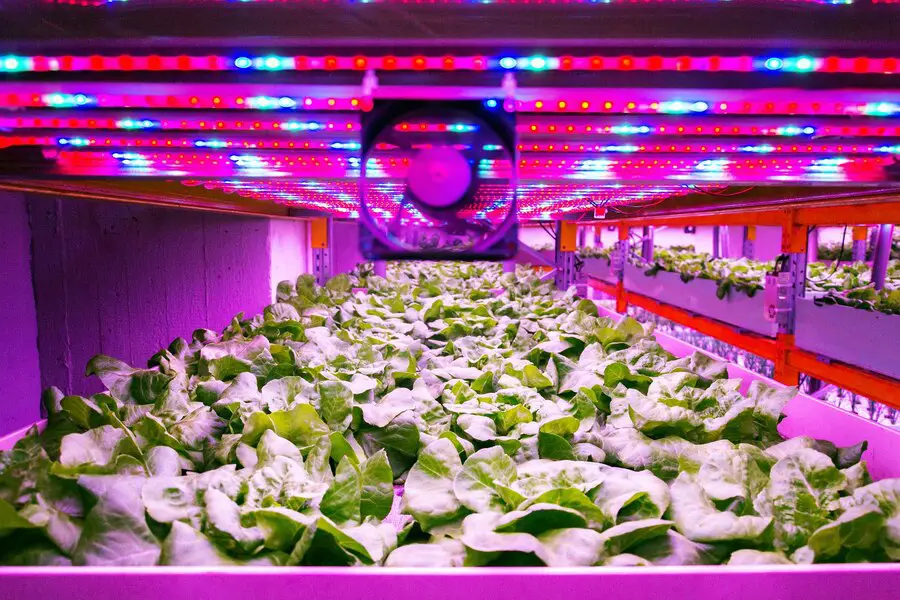
Choosing the Right Spectrum for Your Plants
When it comes to choosing the right spectrum for your plants in a hydroponic system, it is crucial to understand the role that different light wavelengths play in photosynthesis and plant growth. Plants utilize different colors of light for various physiological processes, and selecting the appropriate spectrum can significantly impact their development and productivity.
One of the key factors to consider when determining the optimal spectrum is the stage of plant growth. During the vegetative stage, plants require higher levels of blue light, which promotes leafy growth and helps establish a strong root system. On the other hand, during the flowering and fruiting stages, plants benefit from increased levels of red light, which enhances flower and fruit production. By understanding these light requirements, you can tailor your grow light setup to provide the ideal spectrum for each stage of growth, maximizing your plants’ potential.
• During the vegetative stage, plants require higher levels of blue light for leafy growth and root development.
• During the flowering and fruiting stages, plants benefit from increased levels of red light to enhance flower and fruit production.
• Tailoring your grow light setup to provide the ideal spectrum for each stage of growth can maximize your plants’ potential.
The Role of Light Intensity in Hydroponic Growth
Light intensity plays a crucial role in the growth of plants in hydroponic systems. The amount of light that plants receive directly impacts photosynthesis and, consequently, their overall development. Inadequate light intensity can lead to stunted growth, weak stems, and poor flowering or fruiting. On the other hand, excessive light intensity can cause sunburn and photoinhibition, leading to leaf damage or even plant death.
To determine the ideal light intensity for your hydroponic setup, it is important to consider the specific requirements of the plants you are growing. Different plants have different light needs, so it is crucial to research the light intensity preferences of your chosen plant species. Generally, leafy greens like lettuce or spinach thrive in lower light intensities of around 1000 to 2000 foot-candles (10,764 to 21,528 lux), while high-light crops like tomatoes or peppers require higher intensities of 5000 to 10,000 foot-candles (53,820 to 107,640 lux) or even more during the flowering stage. By optimizing light intensity based on the needs of your plants, you can ensure healthy growth and maximize yields in your hydroponic system.
• Light intensity is a crucial factor in hydroponic growth as it directly affects photosynthesis and overall plant development.
• Inadequate light intensity can result in stunted growth, weak stems, and poor flowering or fruiting.
• Excessive light intensity can cause sunburn and photoinhibition, leading to leaf damage or even plant death.
• Determining the ideal light intensity for your hydroponic setup requires considering the specific requirements of the plants you are growing.
• Different plants have different light needs, so researching their preferences is essential.
• Leafy greens like lettuce or spinach thrive in lower light intensities of around 1000 to 2000 foot-candles (10,764 to 21,528 lux).
• High-light crops such as tomatoes or peppers require higher intensities of 5000 to 10,000 foot-candles (53,820 to 107,640 lux) or more during the flowering stage.
• Optimizing light intensity based on plant needs ensures healthy growth and maximizes yields in hydroponic systems.
Understanding Light Duration and Photoperiods
Light duration and photoperiods play a crucial role in the growth and development of plants in hydroponic systems. Essentially, photoperiod refers to the duration of light exposure that plants receive within a 24-hour period. By manipulating the length of light exposure, gardeners can control various aspects of plant growth, including flowering, fruiting, and overall plant vigor.
Different plant species have specific photoperiod requirements, with some requiring long days (short nights) and others demanding short days (long nights) for optimal growth. For instance, many flowering plants, such as tomatoes and peppers, require a certain minimum number of hours of darkness before they can initiate the flowering process. On the other hand, leafy greens like lettuce tend to thrive with longer periods of light exposure and shorter periods of darkness.
While natural sunlight patterns can vary throughout the year, the beauty of hydroponic systems is that artificial lighting can be used to provide consistent and reliable photoperiods. By using electronic timers or smart controllers, gardeners can easily set and maintain the desired light duration for their plants, ensuring they receive the ideal conditions for growth.
To ensure the health and productivity of your hydroponic plants, it is essential to research and understand the specific light duration requirements of the plants you are growing. By providing the appropriate photoperiod, you can optimize their growth and achieve the desired outcomes.
• Photoperiod refers to the duration of light exposure that plants receive within a 24-hour period.
• Manipulating the length of light exposure allows gardeners to control aspects of plant growth such as flowering, fruiting, and overall vigor.
• Different plant species have specific photoperiod requirements, with some needing long days (short nights) and others requiring short days (long nights).
• Flowering plants like tomatoes and peppers require a certain minimum number of hours of darkness before they can initiate the flowering process.
• Leafy greens like lettuce thrive with longer periods of light exposure and shorter periods of darkness.
• Artificial lighting in hydroponic systems provides consistent and reliable photoperiods regardless of natural sunlight patterns.
• Electronic timers or smart controllers can be used to set and maintain the desired light duration for optimal plant growth.
• Researching and understanding the specific light duration requirements of your hydroponic plants is crucial for their health and productivity.
The Effect of Light Distance on Plant Growth
Light distance plays a crucial role in the growth and development of plants in hydroponic systems. The distance between the grow lights and the plants directly impacts the amount of light the plants receive, which in turn affects their photosynthetic activity and overall growth.
If the grow lights are placed too far from the plants, there may be a lack of sufficient light intensity reaching the leaves. This can result in stunted growth, as the plants may not receive the energy they need to carry out photosynthesis effectively. On the other hand, if the grow lights are placed too close to the plants, they can cause heat stress, leaf burn, or even damage to the plant tissues. It is therefore essential to find the optimal distance that provides the right balance of light intensity without causing any negative effects.
To determine the ideal light distance for your hydroponic setup, it is important to consider the specific requirements of the plant species you are growing. Different plants have varying light intensity needs, and their growth stages can also influence the ideal distance. It is recommended to consult the plant’s specific lighting requirements or seek advice from experts to determine the optimal distance for your particular plants. Taking care to regularly monitor and adjust the light distance as the plants grow can help ensure optimal growth and maximize their yield potential.
• The distance between grow lights and plants directly affects the amount of light received
• Insufficient light intensity can lead to stunted growth and ineffective photosynthesis
• Placing grow lights too close can cause heat stress, leaf burn, or tissue damage
• Finding the optimal distance is crucial for balancing light intensity without negative effects
• Consider specific requirements of plant species and growth stages when determining ideal distance
• Consult plant’s lighting requirements or seek expert advice for optimal distance
• Regularly monitor and adjust light distance as plants grow to maximize yield potential
Factors to Consider When Selecting Grow Lights for Your Setup
When selecting grow lights for your hydroponic setup, there are several factors to consider in order to optimize plant growth and maximize yields. One important factor to take into account is the light spectrum. Different plants have different light requirements, and the spectrum of light emitted by the grow lights can greatly influence their growth and development. For example, blue light is essential for vegetative growth, while red light promotes flowering and fruiting. Therefore, it is crucial to choose grow lights that offer a balanced spectrum or can be adjusted to provide the specific light wavelengths your plants need at different stages of growth.
Another factor to consider is the light intensity. Light intensity refers to the amount of light emitted by the grow lights and received by the plants. It plays a crucial role in photosynthesis, as plants need a certain amount of light energy to convert carbon dioxide and water into glucose and oxygen. Too little light intensity can result in weak and leggy plants, while too much can cause heat stress and excess energy consumption. Therefore, it is important to choose grow lights that can provide the right intensity for your specific plants and adjust it accordingly as they grow.
Additionally, factors such as light duration and photoperiods, light distance, and the overall setup of the grow lights should be taken into consideration. By carefully considering these factors and selecting the appropriate grow lights for your hydroponic system, you can create an optimal growing environment that will result in healthy, vigorous plants and bountiful harvests.
• Light spectrum: Different plants have different light requirements, so it’s important to choose grow lights that offer a balanced spectrum or can be adjusted to provide specific light wavelengths.
• Light intensity: The amount of light emitted by the grow lights affects photosynthesis. Too little can result in weak plants, while too much can cause heat stress. Select grow lights that provide the right intensity for your plants and adjust as needed.
• Light duration and photoperiods: Consider how long the lights will be on each day and if they need to mimic natural daylight cycles for certain plants.
• Light distance: The distance between the grow lights and the plants should be appropriate for optimal light absorption without causing damage or burning.
• Overall setup: Ensure that the positioning and arrangement of the grow lights in your hydroponic system are efficient and effective for providing adequate coverage to all plants.
here is a table of factors to consider when selecting grow lights for your setup:
| Factor | Description |
|---|---|
| Light intensity | The amount of light reaching the plants’ leaves. |
| Light spectrum | The color of light, which plays a crucial role in plant growth and development. |
| Power consumption | Energy efficiency is an important consideration when selecting grow lights for a hydroponic system. |
| Heat output | The amount of heat generated by the grow lights. |
| Cost | The upfront cost of the grow lights. |
Setting Up a Hydroponic Grow Light System
When setting up a hydroponic grow light system, there are several key factors to consider in order to ensure optimal plant growth. First and foremost, it is crucial to choose the right type of grow light for your specific hydroponic setup. LED, fluorescent, and high-intensity discharge (HID) lights are the most commonly used options in hydroponics.
LED grow lights have gained popularity in recent years due to their energy efficiency and long lifespan. These lights emit specific wavelengths of light that can be customized to meet the specific needs of plants during different growth stages. However, they can be more expensive upfront compared to other types of grow lights.
Fluorescent grow lights, on the other hand, are a more affordable option. They are suitable for smaller-scale hydroponic systems and work well for seedlings, herbs, and leafy greens. While they may not provide the same level of intensity as LED or HID lights, they are still effective in promoting healthy plant growth.
HID grow lights, such as metal halide (MH) and high-pressure sodium (HPS) lights, are known for their high light output and ability to cover large areas. They are ideal for larger hydroponic setups and are capable of providing the light intensity needed for fruiting and flowering plants. However, they can consume more electricity and generate more heat, requiring additional cooling measures.
Once you have chosen the type of grow light that suits your needs, the next step is to properly position the lights. The distance between the light source and the plants is crucial, as it affects light penetration and intensity. It is recommended to follow the manufacturer’s guidelines or consult with experts to determine the optimal distance for your specific grow light.
Additionally, it is essential to consider the duration of light exposure, known as the photoperiod. Different plants have varying light requirements, with some needing longer days and shorter nights, while others thrive with shorter periods of light. Understanding the specific light requirements of your plants is crucial for their growth and development in a hydroponic system.
In conclusion, setting up a hydroponic grow light system requires careful consideration of the type of grow light, its positioning, and the duration of light exposure. By selecting the right type of light and following recommended guidelines, you can provide your plants with the optimal light conditions for healthy growth and high yields.
• LED, fluorescent, and HID lights are commonly used in hydroponics
• LED grow lights are energy-efficient and have a long lifespan
• Fluorescent grow lights are affordable and suitable for smaller-scale systems
• HID grow lights provide high light output but consume more electricity and generate heat
• Proper positioning of the lights is crucial for optimal light penetration and intensity
• The distance between the light source and plants should be determined based on manufacturer’s guidelines or expert advice
• Understanding the photoperiod requirements of different plants is essential
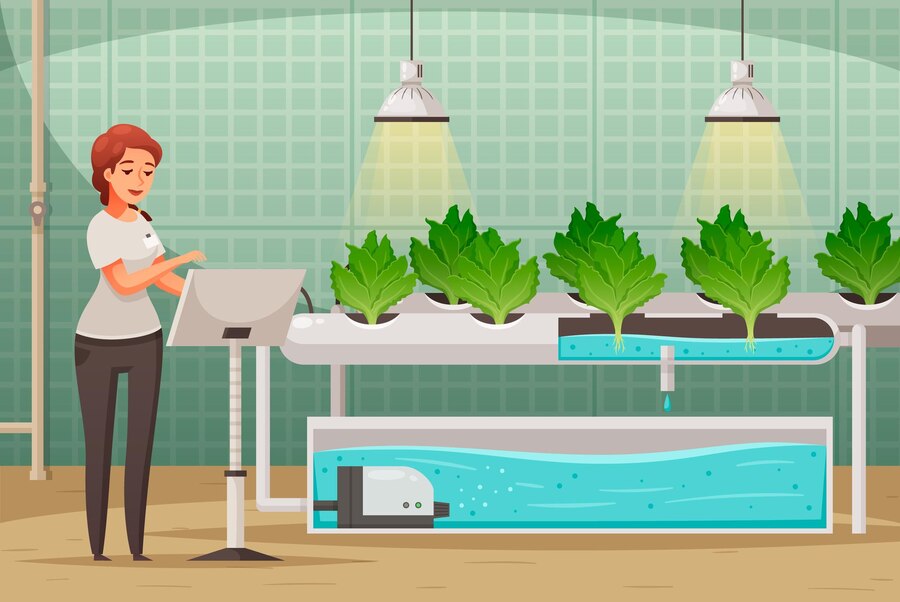
Tips for Properly Positioning Your Grow Lights
Properly positioning your grow lights is essential for the success of your hydroponic system. The placement of the lights can significantly impact the growth and yield of your plants. Here are some tips to help you position your grow lights effectively.
Firstly, it’s important to consider the light intensity requirements of your plants. Different plants have varying light needs, and it’s crucial to understand their specific requirements. For instance, leafy greens like lettuce and spinach thrive in lower light conditions, while fruiting plants like tomatoes and peppers demand higher light levels. To ensure optimal growth, place the lights closer to plants that require higher light intensity and adjust the distance accordingly for plants needing lower levels.
Secondly, be mindful of the coverage area of your grow lights. Different types of lights have varying coverage distances, and understanding their specifications can help you decide on the ideal placement. LED lights, for example, provide more focused light and can be positioned closer to plants, while fluorescents have broader coverage and can be placed slightly farther away. Consider the size and configuration of your grow space to determine the number and arrangement of lights required for sufficient coverage.
Remember, proper positioning of your grow lights is not a one-size-fits-all approach. It requires careful consideration of the specific needs of your plants and the characteristics of the light source. By taking into account the light intensity requirements and coverage area, you can ensure that your plants receive the optimal amount of light for robust growth and maximum yield.
• Consider the light intensity requirements of your plants
– Different plants have varying light needs
– Understand their specific requirements
– Adjust the distance accordingly for plants needing lower levels
• Be mindful of the coverage area of your grow lights
– Different types of lights have varying coverage distances
– LED lights provide more focused light and can be positioned closer to plants
– Fluorescents have broader coverage and can be placed slightly farther away
• Take into account the size and configuration of your grow space
– Determine the number and arrangement of lights required for sufficient coverage
• Remember, proper positioning is not a one-size-fits-all approach
– Carefully consider the specific needs of your plants
– Consider characteristics of the light source
By following these tips, you can ensure that your plants receive optimal amounts of light for robust growth and maximum yield.
Maintenance and Care for Grow Lights
With proper maintenance and care, grow lights can provide optimal performance and longevity, ensuring that your hydroponic plants receive the light they need to thrive. Regular cleaning is essential to remove dust, dirt, and any build-up that can reduce light output and efficiency. Use a soft cloth or brush to gently wipe the surface of the bulbs or panels, taking care not to apply excessive pressure that could damage them.
In addition to cleaning, it’s important to regularly inspect your grow lights for any signs of wear or damage. Check the cords, plugs, and connectors for any fraying or loose connections, as these can pose safety hazards. Replace any damaged components immediately to avoid electrical issues or potential fires. It’s also a good idea to monitor the temperature around your grow lights, as excessive heat can reduce their lifespan. Consider using fans or ventilation systems to ensure proper airflow and dissipate heat effectively. By taking these simple preventative measures, you can prolong the life of your grow lights and maximize their performance for years to come.
• Regularly clean the surface of the bulbs or panels using a soft cloth or brush
• Inspect cords, plugs, and connectors for fraying or loose connections
• Replace any damaged components immediately to avoid safety hazards
• Monitor the temperature around grow lights to prevent excessive heat buildup
• Consider using fans or ventilation systems to ensure proper airflow
• Take preventative measures to prolong the life of your grow lights and maximize their performance.
Troubleshooting Common Grow Light Issues
Grow lights are essential for the success of hydroponic systems, but like any other equipment, they may encounter issues from time to time. One common problem is insufficient light intensity, which can lead to weak and leggy plant growth. This issue can be resolved by adjusting the height of the grow lights to ensure that the plants receive the optimal amount of light. It is also important to regularly check the bulbs for any signs of dimming or burning out, as these can affect the overall output of the grow lights.
Another common issue is improper light spectrum selection. Different plants have different light requirements, and using the wrong spectrum can negatively impact their growth and development. For example, plants in the vegetative stage require more blue light for healthy leaf and stem growth, while plants in the flowering stage need more red light to promote robust flowering and fruiting. Therefore, it is crucial to choose the right spectrum for each stage of plant growth to ensure optimal results. If plants are not growing as expected, it may be worth considering a change in the grow light spectrum.
• Adjust the height of the grow lights to ensure optimal light intensity
• Regularly check bulbs for signs of dimming or burning out
• Choose the correct spectrum for each stage of plant growth
• Vegetative stage requires more blue light, flowering stage needs more red light
Enhancing Grow Light Efficiency and Performance
Enhancing grow light efficiency and performance is crucial in hydroponic systems to ensure optimal plant growth and yield. By maximizing the effectiveness of your grow lights, you can provide the ideal light spectrum and intensity for your plants, leading to healthier and more productive crops.
One way to enhance grow light efficiency is by selecting the right type of grow light for your specific needs. LED grow lights have gained popularity in recent years due to their energy efficiency, longevity, and ability to provide a targeted light spectrum that can be tailored to different growth stages. However, it’s important to note that while LED grow lights are efficient and effective, they can be more expensive upfront compared to other types of grow lights.
Another way to improve grow light performance is by optimizing their placement and distance from the plants. The intensity of light decreases as it travels further from the source, so positioning your grow lights at the appropriate height and angle is crucial. Additionally, regular maintenance and cleaning of your grow lights will help maximize their performance and longevity. Dust and debris can accumulate on the light surface over time, reducing their effectiveness. By regularly cleaning and inspecting your grow lights, you can ensure they are functioning at their best.
In conclusion, enhancing grow light efficiency and performance is a key aspect of successful hydroponic gardening. By selecting the right type of grow light and optimizing their placement and maintenance, you can provide your plants with the optimal light spectrum and intensity they need for healthy growth. Investing time and effort in enhancing grow light efficiency will result in higher yields and overall better results in your hydroponic system.
• Selecting the right type of grow light for your specific needs, such as LED grow lights
• Optimizing the placement and distance of grow lights from plants
• Regular maintenance and cleaning of grow lights to maximize their performance and longevity
Maximizing Plant Growth with Supplemental Lighting
Supplemental lighting can be a valuable tool for maximizing plant growth in hydroponic systems. By providing additional light to complement natural sunlight or to compensate for insufficient light levels, growers can optimize their plants’ photosynthesis and overall productivity.
One key benefit of supplemental lighting is the ability to control the duration and intensity of light exposure. By extending the photoperiod, growers can increase the overall amount of light the plants receive throughout the day, promoting enhanced growth and development. Similarly, adjusting the light intensity can help optimize plant responses, such as encouraging flowering or fruiting, by mimicking specific environmental conditions.
Exciting advancements in LED grow lights have made them a popular choice for supplemental lighting in hydroponics. LED lights offer numerous advantages, including high energy efficiency, low heat output, and a wide range of adjustable spectrums to meet the specific needs of different plant species. However, it is important to note that LED grow lights can be quite expensive compared to other options, and some growers may find it challenging to navigate the vast array of available models and spectrums to choose the most suitable one for their plants. Stay tuned as we explore the benefits and drawbacks of LED grow lights in more detail in the upcoming section.
• Supplemental lighting can optimize plant growth in hydroponic systems
• Provides additional light to complement natural sunlight or compensate for insufficient light levels
• Extending the photoperiod increases overall light exposure and promotes enhanced growth and development
• Adjusting light intensity mimics specific environmental conditions and encourages flowering or fruiting
• LED grow lights are a popular choice due to high energy efficiency, low heat output, and adjustable spectrums
• However, they can be expensive compared to other options
• Choosing the most suitable LED grow light can be challenging with the vast array of available models and spectrums
The Future of Hydroponic Grow Lights
The future of hydroponic grow lights holds promising advancements that are set to revolutionize indoor gardening. Researchers and manufacturers are constantly striving to develop innovative lighting technologies that maximize plant growth and optimize energy efficiency. One area of focus is the development of smart grow lights that utilize artificial intelligence to provide precise and customized lighting conditions for different plant species.
These smart grow lights are equipped with sensors and algorithms that monitor the health and growth of plants in real-time. They can adjust light intensity, spectrum, and duration based on the specific needs of each plant, ensuring optimal photosynthesis and growth. This level of precision not only enhances plant productivity but also reduces energy consumption, making indoor gardening more sustainable and cost-effective. Imagine having a grow light system that can automatically adjust settings based on the growth stage of your plants, providing the perfect environment for them to thrive. This level of automation and customization will truly revolutionize the way we grow plants indoors.
Overall, the future of hydroponic grow lights is bright, with advancements in smart lighting technologies paving the way for more efficient and effective indoor gardening. As these technologies become more accessible and affordable, gardening enthusiasts and commercial growers alike will have access to sophisticated lighting systems that maximize plant growth while minimizing energy consumption. By harnessing the power of artificial intelligence and automation, we can expect to see improved yields, healthier plants, and a greener approach to indoor gardening. So, get ready to embrace the future of hydroponic grow lights and take your indoor gardening to new heights.
• Smart grow lights equipped with sensors and algorithms are being developed to provide precise and customized lighting conditions for different plant species.
• These lights can adjust light intensity, spectrum, and duration based on the specific needs of each plant, ensuring optimal photosynthesis and growth.
• This level of precision enhances plant productivity while reducing energy consumption, making indoor gardening more sustainable and cost-effective.
• Imagine having a grow light system that automatically adjusts settings based on the growth stage of your plants, providing the perfect environment for them to thrive.
• Advancements in smart lighting technologies pave the way for more efficient and effective indoor gardening.
• As these technologies become more accessible and affordable, gardening enthusiasts and commercial growers will have access to sophisticated lighting systems that maximize plant growth while minimizing energy consumption.
• By harnessing artificial intelligence and automation, we can expect improved yields, healthier plants, and a greener approach to indoor gardening.
Please watch video!
What are the key factors to consider when selecting grow lights for a hydroponic setup?
When choosing grow lights for hydroponics, consider factors such as light intensity, spectrum, and duration. Additionally, consider the size of your growing area, the specific needs of your plants, and your budget.
How do LED grow lights differ from fluorescent and HID grow lights?
LED grow lights differ from fluorescent and HID grow lights in terms of energy efficiency and lifespan. LEDs are more energy-efficient, have a longer lifespan, and produce less heat. They also offer a wider range of customizable spectrums.
What are the advantages and disadvantages of fluorescent grow lights for hydroponics?
Fluorescent grow lights are cost-effective and suitable for small-scale hydroponic systems. They are also more energy-efficient compared to HID lights. However, they have a limited light intensity and spectrum range, which may not be ideal for certain plants.
Are there any drawbacks to using LED grow lights?
Although LED grow lights are energy-efficient and have a longer lifespan, they can be more expensive upfront compared to other types of grow lights. Additionally, some cheaper LED lights may not provide the full spectrum of light required for optimal plant growth.
How does light intensity affect hydroponic plant growth?
Light intensity plays a crucial role in plant growth as it directly affects photosynthesis. Adequate light intensity ensures optimal growth and development, while insufficient light can lead to weak and stunted plants.
What is the role of light duration and photoperiods in hydroponic growth?
Light duration and photoperiods refer to the length of time plants are exposed to light. Different plants have specific light requirements during growth, flowering, and fruiting stages. Controlling the duration and timing of light exposure can stimulate desired growth patterns.
How does light distance from plants affect their growth in a hydroponic system?
The distance between grow lights and plants is crucial as it determines the intensity of light received. Placing lights too close can lead to light burn, while placing them too far can result in insufficient light for proper growth. Finding the right balance is essential.
How can I enhance the efficiency and performance of grow lights?
To enhance efficiency, ensure proper positioning of lights, clean and maintain them regularly, and monitor light intensity and duration according to plant requirements. Using reflective surfaces to maximize light distribution can also improve overall performance.
Can supplemental lighting be used to maximize plant growth in hydroponics?
Yes, supplemental lighting can be used to provide additional light during periods of low natural light or to supplement specific wavelengths. It can promote growth, flowering, and fruiting, especially in environments with limited sunlight.
What can we expect in the future of hydroponic grow lights?
The future of hydroponic grow lights is likely to bring advancements in energy efficiency, spectrum customization, and smart control systems. We can expect more cost-effective and sustainable lighting options tailored to the specific needs of plants, leading to improved yields and growth quality.

Nicole Burke is a dynamic writer at SouthElMonteHydroponics, fueled by her passion for horticulture and environmental sustainability. Armed with a degree in Environmental Science from a renowned institution, Nicole’s expertise lies in hydroponic gardening, organic farming, and biodiversity conservation. Her insatiable curiosity and love for nature drive her to explore innovative techniques in hydroponics, seeking to revolutionize the way we grow crops in urban environments. Nicole’s writing reflects her deep commitment to promoting eco-conscious practices and fostering a deeper connection between humans and the natural world. Through her engaging storytelling, she inspires others to embrace sustainable living and harness the power of hydroponics for a greener future.


